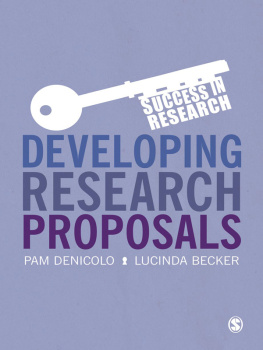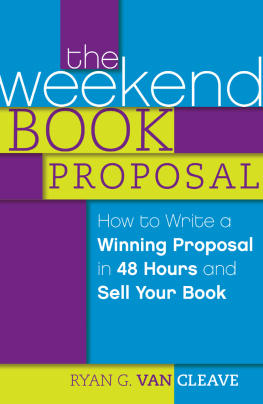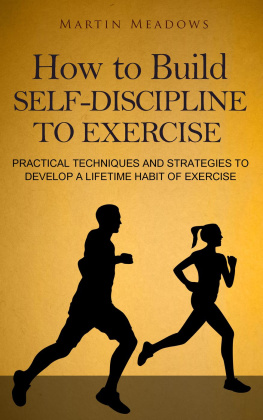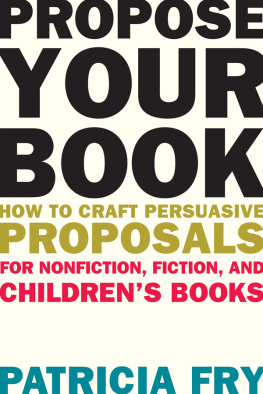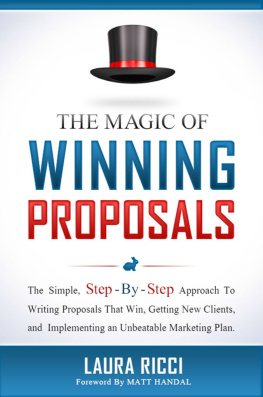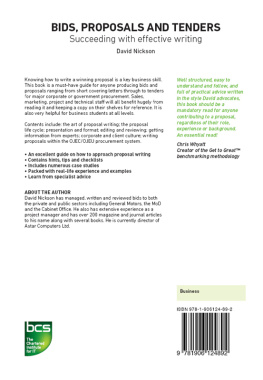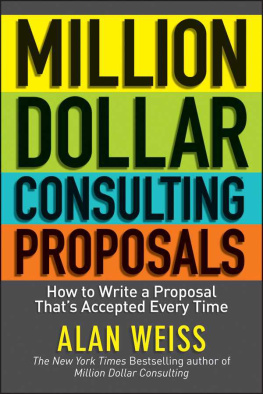Robert J. Hamper - Handbook For Writing Proposals, Second Edition
Here you can read online Robert J. Hamper - Handbook For Writing Proposals, Second Edition full text of the book (entire story) in english for free. Download pdf and epub, get meaning, cover and reviews about this ebook. year: 2010, publisher: McGraw-Hill, genre: Business. Description of the work, (preface) as well as reviews are available. Best literature library LitArk.com created for fans of good reading and offers a wide selection of genres:
Romance novel
Science fiction
Adventure
Detective
Science
History
Home and family
Prose
Art
Politics
Computer
Non-fiction
Religion
Business
Children
Humor
Choose a favorite category and find really read worthwhile books. Enjoy immersion in the world of imagination, feel the emotions of the characters or learn something new for yourself, make an fascinating discovery.

- Book:Handbook For Writing Proposals, Second Edition
- Author:
- Publisher:McGraw-Hill
- Genre:
- Year:2010
- Rating:3 / 5
- Favourites:Add to favourites
- Your mark:
Handbook For Writing Proposals, Second Edition: summary, description and annotation
We offer to read an annotation, description, summary or preface (depends on what the author of the book "Handbook For Writing Proposals, Second Edition" wrote himself). If you haven't found the necessary information about the book — write in the comments, we will try to find it.
What makes a winning business proposal? It highlights your skills and services, meets your clients needs, and clearly sets you apart from the competition.
Since 1995, Handbook for Writing Proposals has helped thousands of professionals develop winning proposals. This exceptional handbook guides you through the unique nine-step proposal-writing process from the initial RFP to the client presentation. In this revised and updated version, the authors show you how to:
- Choose the RFPs that give you the best chance of success
- Showcase your companys skills and services
- Set realistic time/cost schedules and budgets
- Avoid the mistakes that sink most proposals
- Build client relationships that bring you repeat business
- Tailor your writing for an international business audience
The second edition also offers you a wealth of downloadable forms and checklists that you can adapt for your own proposal-writing process.
Whether you own your own business, need to train your corporate staff, or simply want to improve your skills, Handbook for Writing Proposals, second edition will show you how to profit from every proposal you write.
Praise
This book guides you through the process of creating the best impression of your sweat equity to your customer. Whether you need to polish up and improve every aspect of the proposal or just certain elements, this book will fill the need. Remember, the economics of gain only occur when a customer feels youve fulfilled a need and created value.
Paul V. Baron, President, In-Store Bakery Division, The Quarter Oats Company
Handbook for Writing Proposals offers a wealth of down-to-earth, practical guidance on all phases of proposal writing. The book is well organized and full of concrete ideas that are easy to include in real-life situations. The sample letters, checklists, budgets, and proposals are extremely valuable. This book is a great resource for anyone whose success depends on convincing others through the proposal process.
Richard M. Sawdey, Former Vice President and Secretary, R. R. Donnelley & Sons Company
Robert J. Hamper: author's other books
Who wrote Handbook For Writing Proposals, Second Edition? Find out the surname, the name of the author of the book and a list of all author's works by series.

